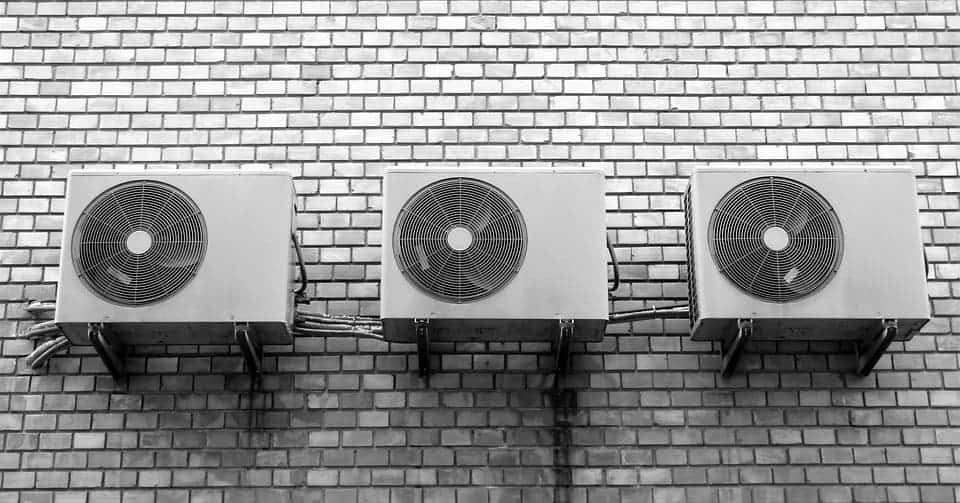Cool down your home and the climate at the same time.
New research from the Karlsruhe Institute of Technology and the University of Toronto wants to put your air conditioning unit to work on fighting climate change. The idea is to outfit air conditioners — devices which move huge amounts of air per day — with carbon-capture technology and electrolyzers, which would turn the gas into fuel.
Crowd oil
“Carbon capture equipment could come from a Swiss ‘direct air capture’ company called Climeworks, and the electrolyzers to convert carbon dioxide and water into hydrogen are available from Siemens, Hydrogenics or other companies,” said paper co-author Geoffrey Ozin for Scientific American.
Air-conditioner units are very energy-thirsty. As most of our energy today is derived from fossil fuels, this means that air conditioners can be linked to a sizeable quantity of greenhouse emissions. It’s estimated that, by the end of the century, we’ll be using enough energy on air conditioning to push the average global temperature up by half a degree. Which is pretty ironic.
The team’s idea is pretty simple — what if heating, ventilation, and air conditioning (or HVAC) systems could act as carbon sinks, instead of being net carbon contributors? Carbon-capture devices need to be able to move and process massive quantities of air in order to be effective. HVAC systems already do this, being able to move the entire volume of air in an average office building five to ten times every hour. So they’re ideally suited for one another. The authors propose “retrofitting air conditioning units as integrated, scalable, and renewable-powered devices capable of decentralized CO2 conversion and energy democratization.”
“It would be not that difficult technically to add a CO2 capture functionality to an A/C system,” the authors write, “and an integrated A/C-DAC unit is expected to show favourable economics.”
Modular attachments could be used to add CO2-scrubbing filters to pre-existing HVAC systems. After collection, that CO2 can be mixed with water to make, basically, fossil fuels. As Ozin told Scientific American, the required technology is commercially available today.
But, in order to see if it would also be effective, the team used a large office tower in Frankfurt, Germany, as a case study. HVAC systems installed on this building could capture enough CO2 to produce around 600,000 gallons of fuel in a year. They further estimate that installing similar systems on all the city’s buildings could generate in excess of 120 million gallons of (quite wittily-named) “crowd oil” per year.
“Renewable oil wells, a distributed social technology whereby people in homes, offices, and commercial buildings all around the world collectively harvest renewable electricity and heat and use air conditioning and ventilation systems to capture CO2 and H2O from ambient air, by chemical processes, into renewable synthetic oil — crowd oil — substituting for non-renewable fossil-based oil — a step towards a circular CO2 economy.”
Such an approach would still take a lot of work and polish before it could be implemented on any large scale. Among some of the problems is that it would, in effect, turn any HVAC-equipped system into a small, flammable oil refinery. The idea also drew criticism as it could potentially distract people from the actual goal — reducing emission levels.
“The preliminary analysis […] demonstrates the potential of capturing CO2 from air conditioning systems in buildings, for making a substantial amount of liquid hydrocarbon fuel,” the paper reads.
“While the analysis considers the CO2 reduction potential, carbon efficiency and overall energy efficiency, it does not touch on spatial, or economic metrics for the requisite systems. These have to be obtained from a full techno-economic and life cycle analysis of the entire system.”
The paper “Crowd oil not crude oil” has been published in the journal Nature Communications.










